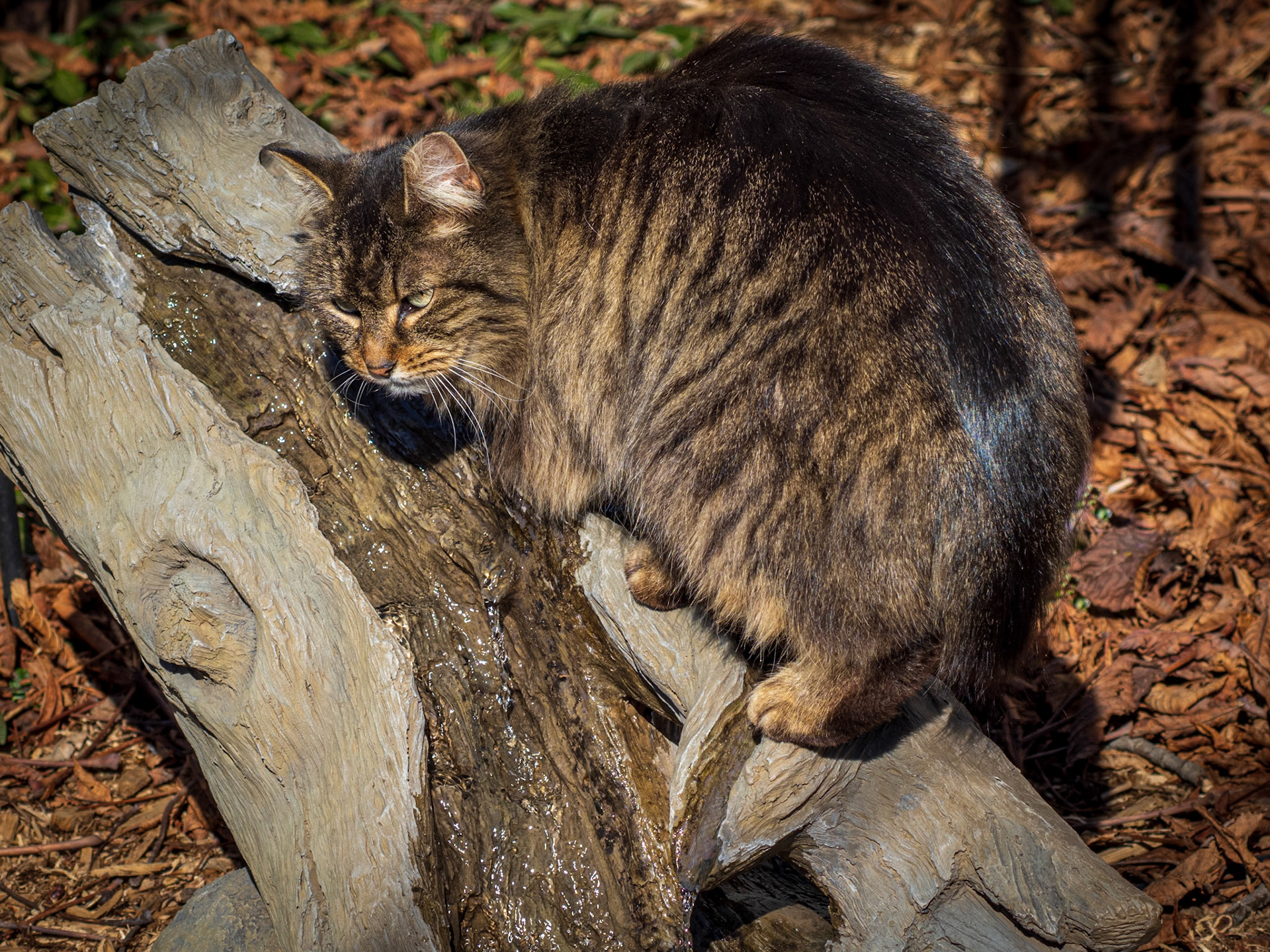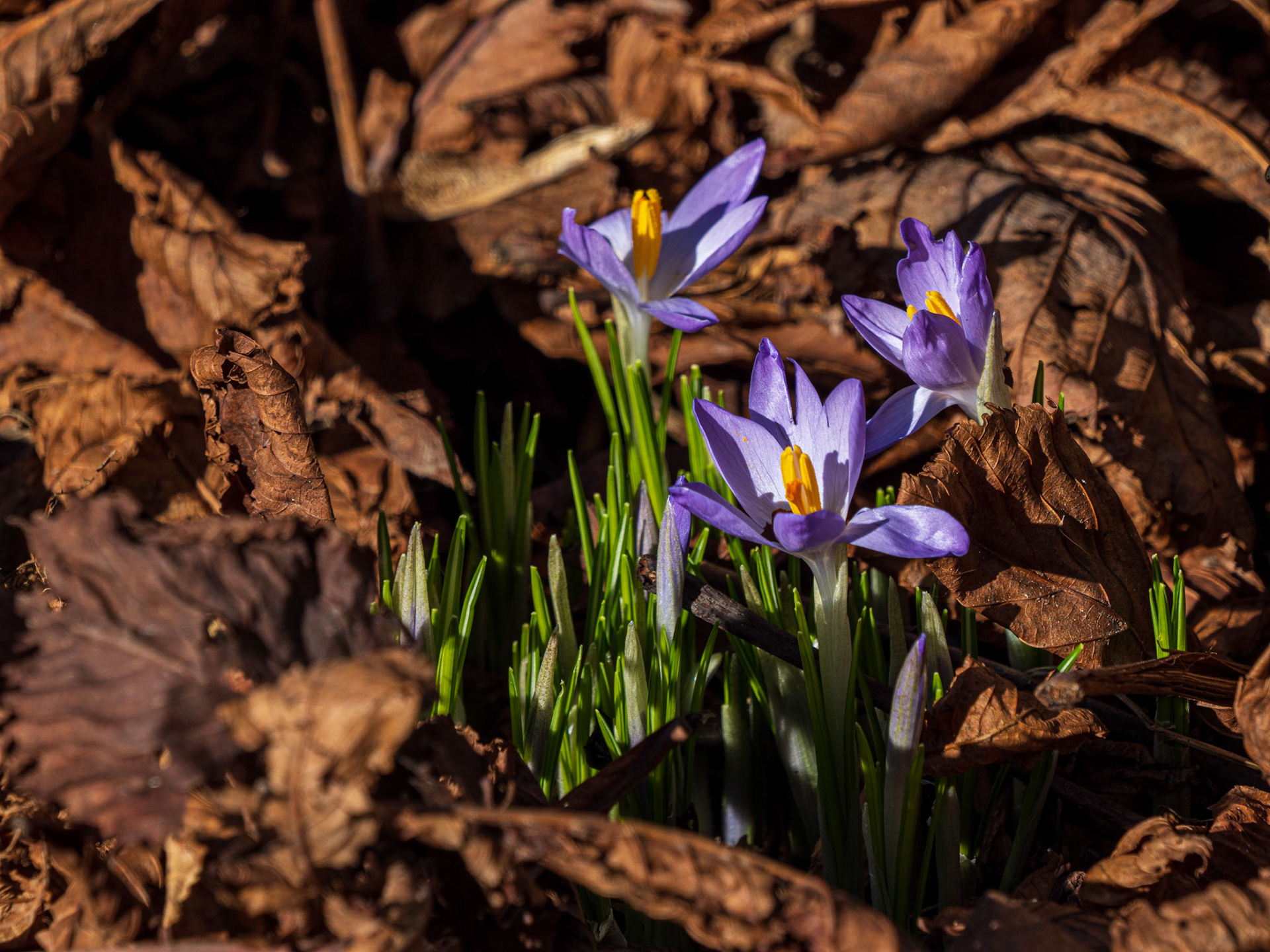Springtime in the Backyard
It was a beautiful weekend for the first one of spring; blue skies, sunshine, mild temperatures. We had some backyard clean up to do and I also decided to fill the bird feeders, in the hopes that I might be able to practice with my new lens.
I was fortunate enough to not only get the opportunity to photograph some birds, but also one of the feral cats we care for.
After the yard chores were done, I was cooling off with a “refreshing adult beverage,” when I noticed a robin on ground. It was hunting - successfully - for grubs, and I managed to get a few shots before he took off, including a classic robin pose.
I was also fortunate enough to have a cardinal visit one of the feeders. I managed to get some decent shots of him on the branches surrounding the feeder.





I was reminded once again that I must not fear higher ISO’s when shooting birds; they’re needed to eliminate blur. While I managed a couple keepers, far more went in the digital bin.
Sidebar, Your Honor
And while we are on the subject of high ISO, I hope you will permit me a slight diversion.
I did some field testing (ok, backyard testing) of high ISO, Image Stabilization (IS) and post processing for noise last weekend, using a still life subject for easy comparison. In my personal - albeit limited - experience - I found that both body and lens IS enabled was advantageous. I noticed a distinct reduction in the "wobble effect" during composition; I could composed better - handheld - because the scene in front of me wasn't so jittery.
Regarding image noise, I shot as high as 3200 ISO on my Olympus EM5 Mark III. And while the noise/grain is apparent, I recall far more grain when I shot 3200 ISO film back in the day.
I also find it helpful to think of digital noise as film grain - then it becomes an artistic choice rather than being at the whim of the sensor...


Above: Full frame without and with Lightroom noise reduction.


Above: 100% crop without and with Lightroom noise reduction.
In the good old days of film, grain was just a fact of life. Sure, in black and white processing, there were things you could do to reduce the impact a little, but the simple fact was that higher speed films produced more noise because the film grain was physically larger. Noise in digital files obviously doesn't happen for the same reason, but the guidance that higher ISO's make for grainier photos is still true.
From a post processing perspective, While Lightroom Classic did a passable job, it was a little too general in the impact. In some ways, that is an advantage - noise reduction was uniform across the board. But by the time I had cut the noise to a noticeable level, true detail was being smoothed over.
I recently bit the bullet and purchased Topaz Denoise AI and - by and large - I've been impressed with its capabilities on any image I have thrown at it. It can get a little heavy-handed with sharpening at times (but that can be controlled with custom settings. Occasionally, it will "miss" small areas, but from a printing perspective no one is likely to notice.


Above: Topaz DeNoise AI did a better job in many ways, when compared to Lightroom's capabilities, but it would miss small areas. Note the noise in the background under the red tree branch, which is more noticeable than the background area beside the red tree.

Above: Full frame using Topaz DeNoise AI noise reduction.
And Now, Back to Our Program
Peanut is one of two feral cats we care for in our backyard. They even have their own winter shelters I build for them that are located under a large pine tree near the back of the yard. While they are both grateful for (or at least come to expect) food, I cannot get very close to either of them. Peanut is braver than her friend, but still, she stays out of reach. So the new 100-400mm lens I bought for my Olympus camera (effective focal length of 200-800mm on full frame) let’s me bridge that gap. She behaves naturally and I get some lovely photos.


The bright sunshine also meant strong shadows and textures and I spent a little time shooting close-ups and abstracts using my new long lens.



Note: You can learn more about my new M. Zuiko 100-400mm f/5-f/6.3 lens in this personal field review.
Of course, my phone is never far away. I find that some shots just come more naturally when I have my phone in hand. I originally shot this first image below simply to play with manual focus in Pro Mode in Lightroom Mobile. Then I added props to tell more of a story. Now I’m thinking this could make an interesting stock image, with a bit more care to the composition.
And in the case of the chiminea, Lightroom Mobile’s Long Exposure Mode make shots like this little fire, simple to do handheld. This 3.2 second exposure blended about 90 individual captures to create a single DNG file. I made liberal use of Selective Adjustments to tone down the busy background.
On. My. Phone.
Using my finger.
Just making sure everyone caught that...


Spring also means crocuses begin to bloom. We have a few patches of them in a garden bed that gets sun virtually all day in the early spring. By late spring, that same garden is in the deep shade of a decades old horse chestnut tree.




Well that was my weekend. I hope if you are having spring in your part of the world right now that you enjoyed the weekend and that the weather was cooperative. And even if it wasn't, it's always worth seeing what's near a window inside, or what's just outside your door.
Cheers!










